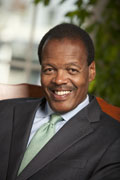
M. Lee Pelton, 1998-2011
19th President
Lee Pelton held administrative roles at Colgate University and Dartmouth College before being appointed to Willamette's presidency in July, 1998. During his 13 year tenure, Pelton completed a capital campaign which raised $131 million. Two new buildings were constructed — Ford Hall and Kaneko Commons. Several renovations were made to existing buildings, including the theater which now bears his name. Pelton increased the College of Liberal Arts' faculty by 20% to allow for the reduction of the teaching load and brought a greater emphasis to faculty research. Five academic ‘Centers for Excellence’ were created to promote interdisciplinary research, internships, and community outreach. During his tenure, the Atkinson Graduate School of Management expanded to include a Portland campus, the College of Law’s academic standings rose, and the Graduate School of Education was established.

Larry Large, 2010
Acting President
Beginning in 1972, Larry Large served as vice president and dean of students at Willamette University. During his 10 years at Willamette, he also served in other capacities, including as acting president in 1978 and in 2010. Large subsequently served as vice-president for Public Affairs at Reed College, as vice president for public affairs and development at the University of Oregon, and later was appointed vice chancellor of the Oregon University System. After several years there, he returned to Reed where he served as executive vice president before accepting an appointment as president of Oglethorpe University in Atlanta, Georgia in 1998. Large was also the founding president of the Oregon Alliance of Independent Colleges and Universities (The Alliance) from 2012 to 2016.

Bryan Johnston, 1997-1998
Interim
In addition to his service to Willamette University, Bryan Johnston's academic experience included terms as adjunct professor at the law schools of the University of New Mexico, University of Bridgeport, University of Oregon and Pepperdine University. His state service included terms in the Oregon House from 1995 to 1999. Johnston served as associate dean of the Willamette University College of Law from 1989 to 1991. He was a founding faculty member of the College of Law's Center for Dispute Resolution and served as director of the center from 1986 to 1989. He served as interim president of the University from 1997 to 1998 and then as Dean of Willamette's Atkinson Graduate School of Management from 1999 to 2001.

Jerry E. Hudson, 1980-1997
18th President
Jerry Hudson served on the faculty of Pepperdine University and as President of Hamline University before coming to Willamette University in 1980. Adjectives often associated with Hudson include visionary, leader, mentor, and consensus-builder. Hudson is credited with bringing Willamette’s vision back into focus by recognizing the importance of the university’s past while simultaneously moving the institution forward in a positive manner. During his presidency, the Mark O. Hatfield Library was built and the Mill Race was redesigned to include “Hudson’s Bay,” which continues to be a source of pleasure for the entire campus. Before leaving campus Hudson ensured all was in place for the construction of the Hallie Ford Museum of Art and the Mary Stuart Rogers Music Center which includes “Hudson Hall.”
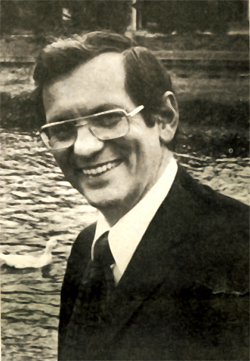
Robert Lisensky, 1973-1980
17th President
Before being appointed to Willamette University’s presidency, Robert Lisensky served variously as a Methodist pastor, a professor of sociology, and as an academic administrator, but considered himself foremost an educator. Lisensky was confronted with some interesting “controversies” during his tenure including: students questioning the campus alcohol policy; the future of Willamette’s Greek system with Greeks and “anti-Greeks” at odds with one another; the replacement of the letter grades “D” and “F” with “NP” and “W” in the grading system; and an inadequate library with out-of-date materials and extreme temperatures.
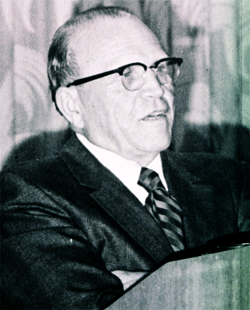
James H. Corson, 1972-1973
Interim
By the time he joined Willamette, James Corson had been a teacher, coach, and dean, but above all he considered himself an administrator who got the job done. When Willamette University Board Chairman George Atkinson approached Corson with the offer to serve as interim president, Corson was 66 years of age and happy to take the position with no desire to be promoted. He took over an administration plagued with low morale and broken trust after Fritz’s term and left Willamette having “revivified the spirit of Willamette by approaching problems openly, practically and sensibly…”
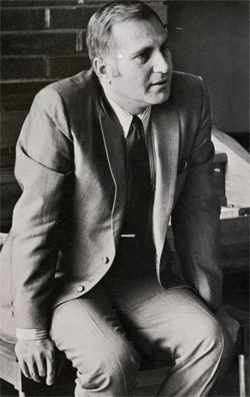
Roger J. Fritz, 1969-1972
16th President
When Roger Fritz came to Willamette University, the campus culture was experiencing turmoil reflective of that occurring in the rest of the nation -- civil rights issues, questions about religious relevance, change in educational theories. Although Fritz worked to calm the tensions, his term at Willamette was troubled by various communication difficulties and in the spring of 1972, the Board of Trustees asked for his resignation. When Fritz did not tender a letter of resignation, the Board terminated his contract.

G. Herbert Smith, 1942-1969
15th President
George Smith was called to the presidency in the wake of Carl Knopf’s resignation and death. At 37 years of age, Smith was the youngest president-elect since Willis Hawley and was the first layman to enter the office. The second volume of Chronicles of Willamette is devoted entirely to Smith’s 27 years as president and details his many accomplishments some of which include: establishing the V-12 Navy program on campus during WWII; doubling the size of the faculty and increasing their salaries; growing the endowment to five times what is was upon his arrival; increasing the number of buildings from 11 to 30; supporting the petition of fraternities from local to national affiliation; and expanding the physical size of the campus from 18 acres to 52.
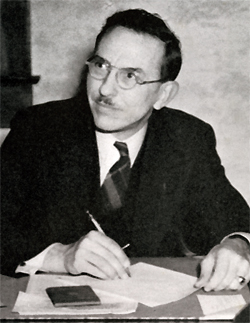
Carl Sumner Knopf, 1941-1942
14th President
Carl Knopf was unanimously elected to the presidency, entering the school in its centennial year of existence. His career at Willamette was cut short, however, as a result of events following the attack on Pearl Harbor. During his registration under the selective service act, Knopf, who was a pacifist, caused upset within the Salem community stemming from his willingness to sign up only for non-combat duty. The Board of Trustees resolved to distance the university, which had given full support to the war effort, from Knopf’s personal convictions, and he was asked to resign following the 1942 commencement. At that time Knopf oversaw the planting of the Star Trees, five sequoias he had brought himself from California.

Bruce Richard Baxter, 1934-1941
13th President
Bruce Baxter was an experienced teacher, administrator and public speaker. Described as a people person with an analytical mind and a “human dynamo of energy,” Baxter informed the students upon arrival that his “first official step will be to see that Willamette licks Puget Sound.” Unlike his predecessor, Baxter embraced athletics. During his administration, Willamette saw greatly strengthened public relations, changing social life for students, as well as a continuing building boom including the construction of a new library (now Smullin Hall) and Collins Hall and the moving of the former U.S. Post Office onto campus to serve as the Law School. In the summer of 1940, Bruce Baxter was elected bishop by the Western Jurisdictional conference of the Methodist Church; he nevertheless graciously offered to continue serving as acting president sans salary, until the university was able to appoint his successor.
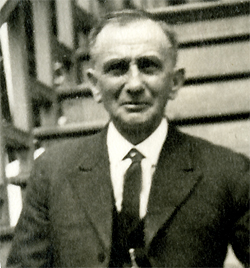
Carl Gregg Doney, 1915-1934
12th President
Carl Doney pastored several churches, and had spent eight years as the president of West Virginia Wesleyan College when he was called to Willamette University. Under his tenure, Waller Hall was re-built after a devastating fire and a new gymnasium and women’s dorm (Lausanne Hall) were constructed. Doney was the first president freed from the primary charge of teaching and fundraising, which left him physically on campus to focus on day-to-day administration. Under Doney, the College of Liberal Arts’ faculty grew from 15 to 30 and, in 1927, WU received the recognition of the Association of American Universities; however, his strong opinions regarding pedagogy sometimes left faculty feeling hesitant to speak out with opposing views.
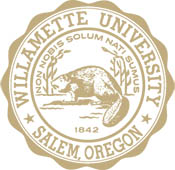
George Henry Alden, 1914-1915
Interim
Prior to joining Willamette’s faculty, George Alden taught history for four years at the University of Washington. In 1914 President Homan abolished the office of dean, held by Gaylard H. Patterson. The friction between Homan and Patterson escalated until the Board of Trustees accepted both their resignations. The Board then restored the office of dean and appointed Alden to that position and named him acting president for a year. Alden was exceedingly careful to promote harmonious intra-university relations.
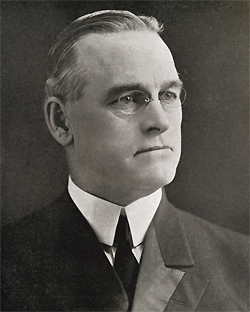
Fletcher Homan, 1908-1914
11th President
Fletcher Homan, described as a “large man of commanding appearance who made a fine impression in public address” was welcomed with optimism by the Willamette community after the Board’s clash of personalities with President Coleman. Homan did no teaching during his tenure but rather, as directed by the Board, focused on the financial campaign to raise a half million dollars. Thanks to Homan’s galvanizing efforts, the university was able to secure an endowment that put it on firm financial footing for the very first time. However, Homan’s unwillingness to entrust internal administrative duties to others during his absence while fundraising and his “dictatorial” approach with students and faculty ultimately led the Board to offer a year-long paid leave of absence upon receipt of Homan’s resignation.

John Hamline Coleman, 1902-1908
10th President
John Coleman was described as a “handsome man of commanding presence, possessing a winsome personality which immediately won for him loyalty from both the students and faculty.” Coleman had the task of liquidating $35,000 worth of debt and then initiating a campaign to raise a $100,000 endowment fund. Although $35,000 was pledged a little over a year, Coleman toiled for all six years of his presidency to collect the money. Securing a new academic building was also on Coleman’s list. He even sought funding from Andrew Carnegie in the amount of $40,000 only to be turned down and informed that Willamette “may be a university in embryo, but it certainly does not seem to be yet a university.” He resigned on February 18, 1908, following a growing difference of opinion with the Board of Trustees.
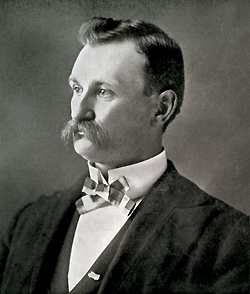
Willis Chatman Hawley, 1893-1902
9th President
Willis Hawley was a WU alumnus having earned bachelor’s degrees in arts, science and law, as well as a master’s degree. Described as possessing imagination, enthusiasm and tireless energy, Hawley joined Willamette’s faculty in 1891. At the age of 29 he was appointed to serve as acting president and then officially elected to the office in 1894. At a time when WU struggled financially, Hawley was a hands-on president and could be seen on campus in overalls nailing down loose boards on sidewalks or painting classrooms. After leaving the office of the President, he was reappointed as a newly-minted Vice President of the University and Dean of the College of Liberal Arts.
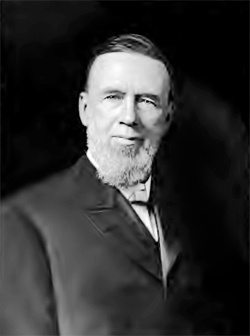
George Whitaker, 1891-1893
8th President
George Whitaker was serving as president of Wiley University in Texas when he was elected president of Willamette University on July 25, 1891. Whitaker implemented “Blue Laws” upon his arrival. He began a capital campaign to raise money for a much needed new academic building and established graduate programs although few students were able to complete the two extra years necessary for the graduate degree. Whitaker felt strongly that the entire control of the campus, buildings and finances should reside with him rather than the Financial Agent and when the Board refused to grant his request to transfer responsibilities, Whitaker resigned.
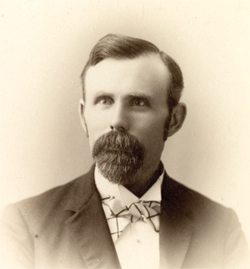
Thomas Van Scoy, 1880-1891
7th President
After serving for a year as professor of ancient languages at Willamette University, Thomas Van Scoy was asked to step in as acting president upon Lambert's resignation, a position that was made permanent in January of 1881. Van Scoy's generosity and commitment to Willamette's progress is illustrated in his purchase and donation of the home of the Old Institute's first teacher (Chloe Clarke Willson) for the purpose of operating as the Women's College. After serving 11 years at WU, Van Scoy became dean of the newly founded Portland University, a position he held until he died on February 11, 1901.

Charles E. Lambert, 1879-1880
6th President
Charles Lambert served for two months under the title of acting President before being confirmed in that role. During his year-long tenure, Lambert’s duties were more of an administrative nature than any of his predecessors’ had been and he spent considerable time preparing and submitting plans for development of the school. Lambert was a major force in the establishment of the law school and the organization of the Women’s College. Lacking full support of the Board of Trustees, he resigned the following fall.
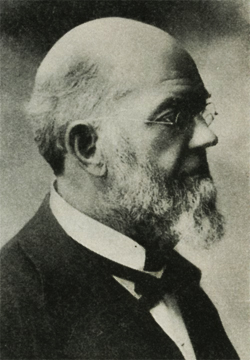
Thomas Milton Gatch, 1870-1879
5th President
Thomas Gatch (2nd President, 1860-1865) returned to Willamette for a second term as president in 1870.
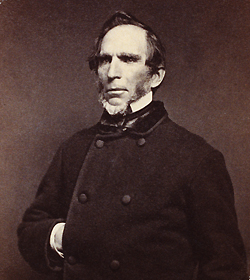
Nelson Rounds, 1868-1870
4th President
Members of the board of trustees determined that at age 61, Nelson Rounds seemed to have the experience, dignity and prestige they were looking for in a president after Wythe’s administration. Some students expressed the belief that Rounds had been brought for the “purpose of civilizing the University” and described him as old fashioned, strict and severe. Regardless of his lack of popularity with students, it was ill health that made it impossible for him to retain the position longer than two years.

Luther T. Woodward (interim), 1867-1868
Interim
Rev. Luther Woodward, a graduate of Wabash College in Indiana, was a newly-elected professor of mental and moral science when he was asked to serve as acting president after Wythe failed to win the Willamette Board’s vote for re-election. He served for a year’s time, afterwards returning to pastoral work; he remained a member of Willamette’s Board of Trustees until his death in 1876.
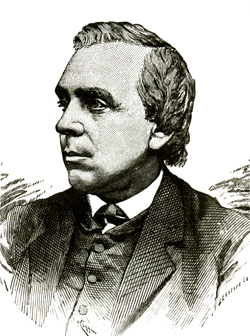
Joseph Henry Wythe, 1865-1867
3rd President
Joseph Wythe was recommended for Willamette’s presidency and at the same time assumed the pastorate of the Methodist church in Salem. During his brief tenure as president Wythe taught 12 classes and was listed as professor of mental and moral science in the collegiate department; professor of physiology, hygiene and microscopy in the medical school; and professor of biblical languages and literature in the theological department. It is also during this time that WU’s Medical College is opened. After two years of service, Wythe was forced to resign after his refusal to give up tobacco caused the majority of the Board of Trustees to vote against his re-election.

Leonard J. Powell, 1865
Acting President
Leonard Powell was hired as a teacher by the Willamette Board of Trustees on November 20, 1861. Powell taught courses in mathematics and natural science at the university for 14 years. He served as acting president after the resignation of Thomas Gatch. Powell’s temperament was somewhat more lenient than some others who shared the office of the president as evidenced by an excerpt from a student diary: “Came near being expelled from school for [igniting] some powder which was lying on the floor in Powell’s room, but soon got him into good humor.”

Thomas Milton Gatch, 1860-1865
2nd President
Thomas Gatch first served as an acting president of Willamette University at the age of 27, upon the resignation of Hoyt on September 26, 1860. Gatch, already a professor of Ancient Languages and Moral Science at Willamette, was offered the position of president permanently. After serving for five years, Gatch offered his resignation when he accepted a position as head of the Portland Academy. He returned to Willamette for a second term as president in 1870.
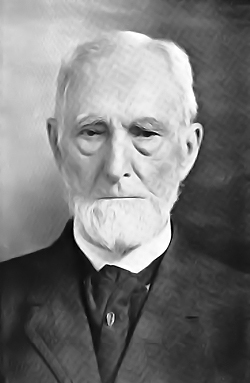
Francis S. Hoyt, 1853-1860
1st President
When Willamette University was chartered in 1853, Rev. Francis Hoyt became its first president. In addition to teaching and running the Oregon Institute (and serving as Willamette’s first president), Hoyt served as librarian of the territorial library, editor of the Pacific Christian Advocate and secretary of the Oregon Conference of the Methodist Church. Hoyt served at Willamette for 10 years, leaving at the age of 38 for a professorship at Ohio Wesleyan University.
